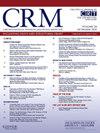优化 STEMI 患者初始 P2Y12 抑制剂治疗的策略。
IF 1.6
Q3 CARDIAC & CARDIOVASCULAR SYSTEMS
引用次数: 0
摘要
简介:使用阿司匹林和 P2Y12 抑制剂的双联抗血小板疗法(DAPT)是 STEMI 患者接受经皮冠状动脉介入治疗(PCI)的标准疗法。摘要:由于 STEMI 和 PCI 急性期血小板活性较高,因此充分、快速地抑制血小板非常重要。在 STEMI 中增加替卡格雷/普拉格雷的负荷剂量或提前给药的策略并未成功缩小血小板抑制的差距。改善 STEMI 早期使用替卡格雷/普拉格雷的潜在策略包括与静脉注射抗血小板药物或压碎或咀嚼给药进行桥接:结论:在 STEMI PCI 之前或之后立即口服替卡格雷/普拉格雷通常足以预防血栓并发症。如果希望更快地抑制血小板,或因无法吞咽药片而影响口服给药,则可将替卡格雷/普拉格雷药片压碎/嚼碎,作为静脉注射 P2Y12 抑制剂疗法的替代方案。本文章由计算机程序翻译,如有差异,请以英文原文为准。
Strategies to optimize initial P2Y12 inhibitor therapy in STEMI patients
Introduction
Dual antiplatelet therapy (DAPT) with aspirin and a P2Y12 inhibitor is the standard of care for patients who undergo percutaneous coronary intervention (PCI) for ST elevation myocardial infarction (STEMI). Though this regimen reduces rates of ischemic events in patients with STEMI, the optimal strategy for P2Y12 administration in STEMI patients is still evolving.
Purpose
The purpose of this review is to summarize current evidence on optimal use of ticagrelor and prasugrel in the acute phase of STEMI.
Summary
Due to high platelet activity in the acute setting of STEMI and PCI, adequate and rapid platelet inhibition is important. Strategies of increased ticagrelor/prasugrel loading dose or earlier administration in STEMI have not been successful in closing this platelet inhibition gap. Potential strategies for improving ticagrelor/prasugrel use early in STEMI include bridging with intravenous antiplatelet agents or crushed or chewed administration.
Conclusion
Oral ticagrelor/prasugrel given before or immediately after STEMI PCI is usually sufficient to prevent thrombotic complications. When faster platelet inhibition is desired, or oral administration is compromised by inability to swallow tablets, crushing/chewing ticagrelor/prasugrel tablets is an alternative to intravenous P2Y12 inhibitor therapy.
求助全文
通过发布文献求助,成功后即可免费获取论文全文。
去求助
来源期刊

Cardiovascular Revascularization Medicine
CARDIAC & CARDIOVASCULAR SYSTEMS-
CiteScore
3.30
自引率
5.90%
发文量
687
审稿时长
36 days
期刊介绍:
Cardiovascular Revascularization Medicine (CRM) is an international and multidisciplinary journal that publishes original laboratory and clinical investigations related to revascularization therapies in cardiovascular medicine. Cardiovascular Revascularization Medicine publishes articles related to preclinical work and molecular interventions, including angiogenesis, cell therapy, pharmacological interventions, restenosis management, and prevention, including experiments conducted in human subjects, in laboratory animals, and in vitro. Specific areas of interest include percutaneous angioplasty in coronary and peripheral arteries, intervention in structural heart disease, cardiovascular surgery, etc.
 求助内容:
求助内容: 应助结果提醒方式:
应助结果提醒方式:


